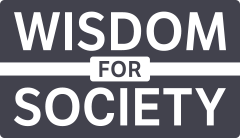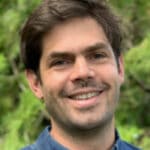When I was seven, my father began a mid-life spiritual quest. He tried hypnosis, fasting, walking at night in the forest and taught himself to meditate. He showed me as well. Back then, meditation was still slightly exotic. One spring afternoon during recess, I gathered four or five friends out in the grass and taught them what I had learned. Close your eyes, count your breaths to twenty, and when you open your eyes, everything will look bright blue. It was an instant hit.
Meditation in our society has come a long way in the past thirty years, but its full depth is still often overlooked. While simple and easy to understand, meditation is powerful and subtle. Beyond bringing relaxation, sharpening focus, improving health or making the world look brighter, the Buddha taught meditation to uproot suffering completely and awaken our full human potential.
Buddha didn’t set out to overcome stress or become more efficient through meditation. His quest was to explore the source of human frustration and pain. The source, which he discovered, is a deep, persistent habit of being out of touch with reality—a habit that is sustained by distraction. In reality, everything is interlinked and constantly changing, but when we are distracted, we are mostly blind to cause and effect and tend to fixate on only what is in front of us. It could be a simple as failing to notice the impact our mood has on others or as dangerous as ignoring the effect our daily life has on global climate.
My Dharma teacher would always emphasise that meditation is a process of coming to know our own mind. It matters because mind is the single most important factor in life. It is the experiencer, the knower, the thinker, the feeler and the instigator of all we communicate and do. Mind is the centre of our world, so it’s worthwhile asking: how well do I know my mind? How well do I care for my mind?
When mind is chaotic, confused or unaware, this is reflected in our behaviour and in all its repercussions. By contrast, when mind is calm, clear and wakeful, we are more naturally in tune with ourselves and the world around us. We are able to respond appropriately to whatever we face with more balance, precision, compassion and perspective.
At the beginning, meditation is a about gathering the mind and cultivating peace and stability through mindfulness and non-distraction. We learn to bring our mind home through simply being rather that doing, reacting or judging. We cultivate an attitude of openness to thoughts, emotions and experience, neither pushing anything away, nor chasing after it, but simply being spaciously mindful and aware. This balance of spacious mindfulness and awareness becomes the ground for understanding our mind and our experience with less and less confusion. It gives rise to a natural harmony in ourselves and with the world around us.
At its heart, meditation is a way to reveal the inherent nature our mind—an unchanging pure awareness that underlies the whole of our existence. Awareness is discovered to be like the vast open sky—unlimited, unfathomable and ever present. Thoughts, emotions, perceptions and stories, by contrast, are merely like clouds passing through. Meditation masters, who have come to know themselves in this way, speak of discovering a natural great peace—a primordial confidence that is carefree, loving, and unshakable.
It might sound far off from our daily experience, but when the world gets turned upside down, it’s worth exploring the deeper roots of anxiety and stress or the nagging uneasiness that comes from building our lives on sand. We might want to take a deeper look at meditation. At times like this, we need more than just a life hack for relaxation or tools for enhancing performance. We need to come to know our mind, become the master of ourselves and our world and learn simply to be who we really are. This is meditation.

